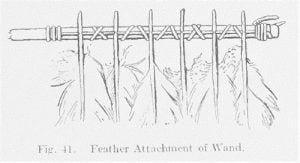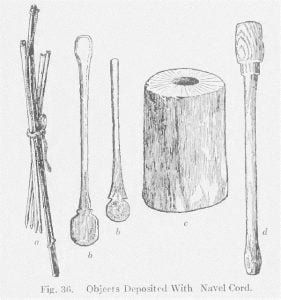Yuchi Games
With the Yuchi, all games have a strong ceremonial aspect. They are, most of them, of a public character, taking place in the allotted playground adjacent to the public square. The afternoon of the second day of the annual festival is the usual time for playing them ceremonially. Many of the games are accompanied by ritual, more especially the ball game. Stakes are wagered in nearly all games by both players and spectators. Like most Indian games the betting is a very important item of consideration. The first to call for description is the ball game played with two rackets … Read more







